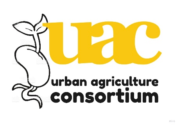UAC has been able to take a prototyped mapping tool developed with GeoFutures and the FoE experiments team in Bristol for mapping land for trees, and link it to Food Futures in Lancaster. What they are now creating is a ‘Hope Spots’ mapping tool that will help the district of Lancaster plan, in real terms, a resilient local food system which creates opportunities for new entrant farmers and new agroecological businesses serving it’s citizens.
Without knowing what’s going on with land, where it is, who owns it, size, topography, condition etc, many parts of Food Future’s brilliant, community-created Food Strategy would slow down and hit barriers.
You can read all about the project here:
Rurban Hope Spots: Mapping land to unlock our local food growing potential
Rachel Marshall, a soils and food systems researcher at Lancaster Uni who is working on the project with Mark Thurstain from Geofutures says:
Building on this approach we are using Lancaster District as a test bed for examining what data is needed to inform the process of identifying land for food projects and businesses – places that would be good for food growing, good for people, good for ecosystems and good for business – whilst also testing the reality of accessing land identified.’
This project is part of the Rurban Revolution.
If you’d like to get in touch with these mappers to talk about mapping food land in your area using the Hope Spots methodology, please get in touch with us via the contacts page.

